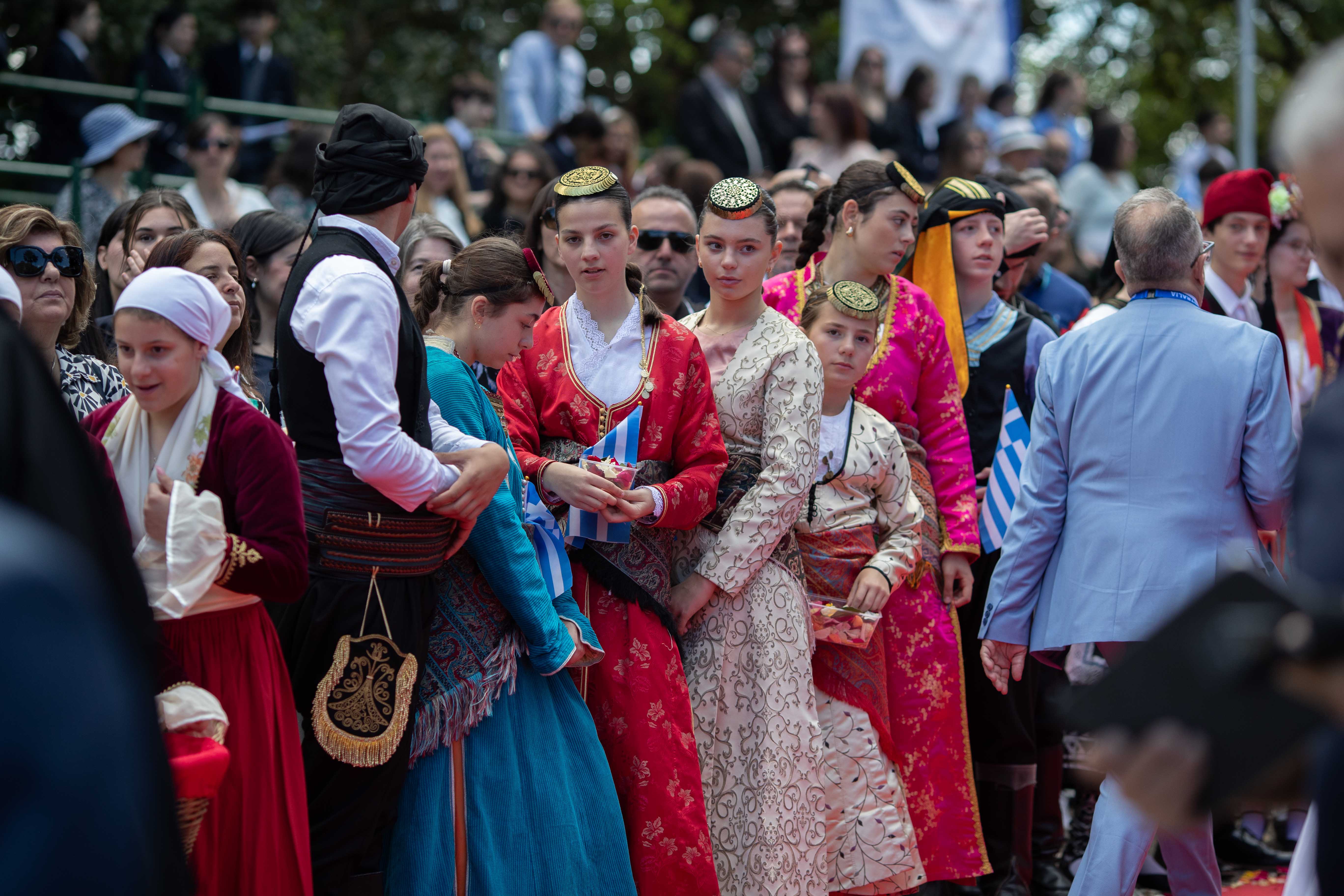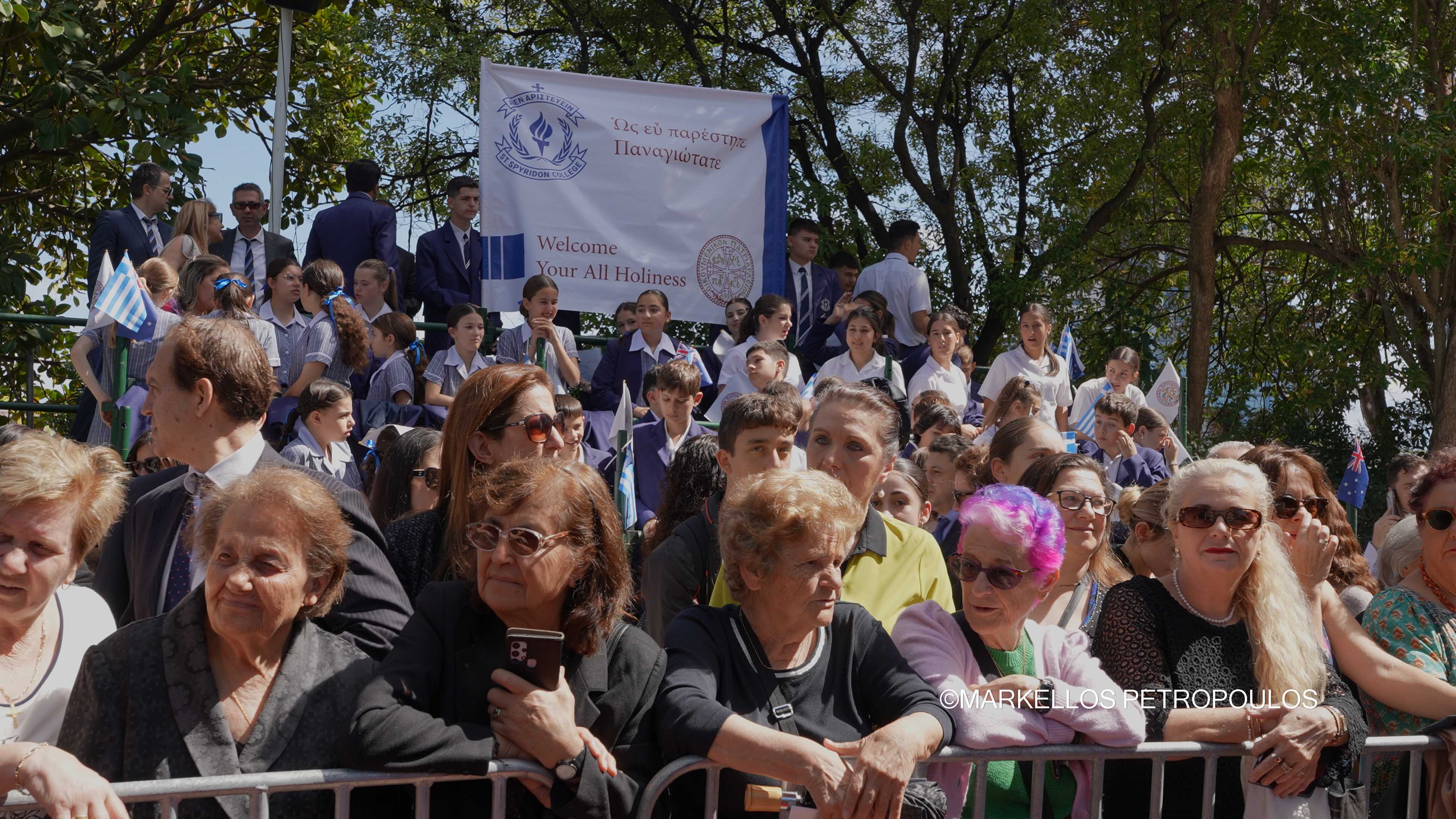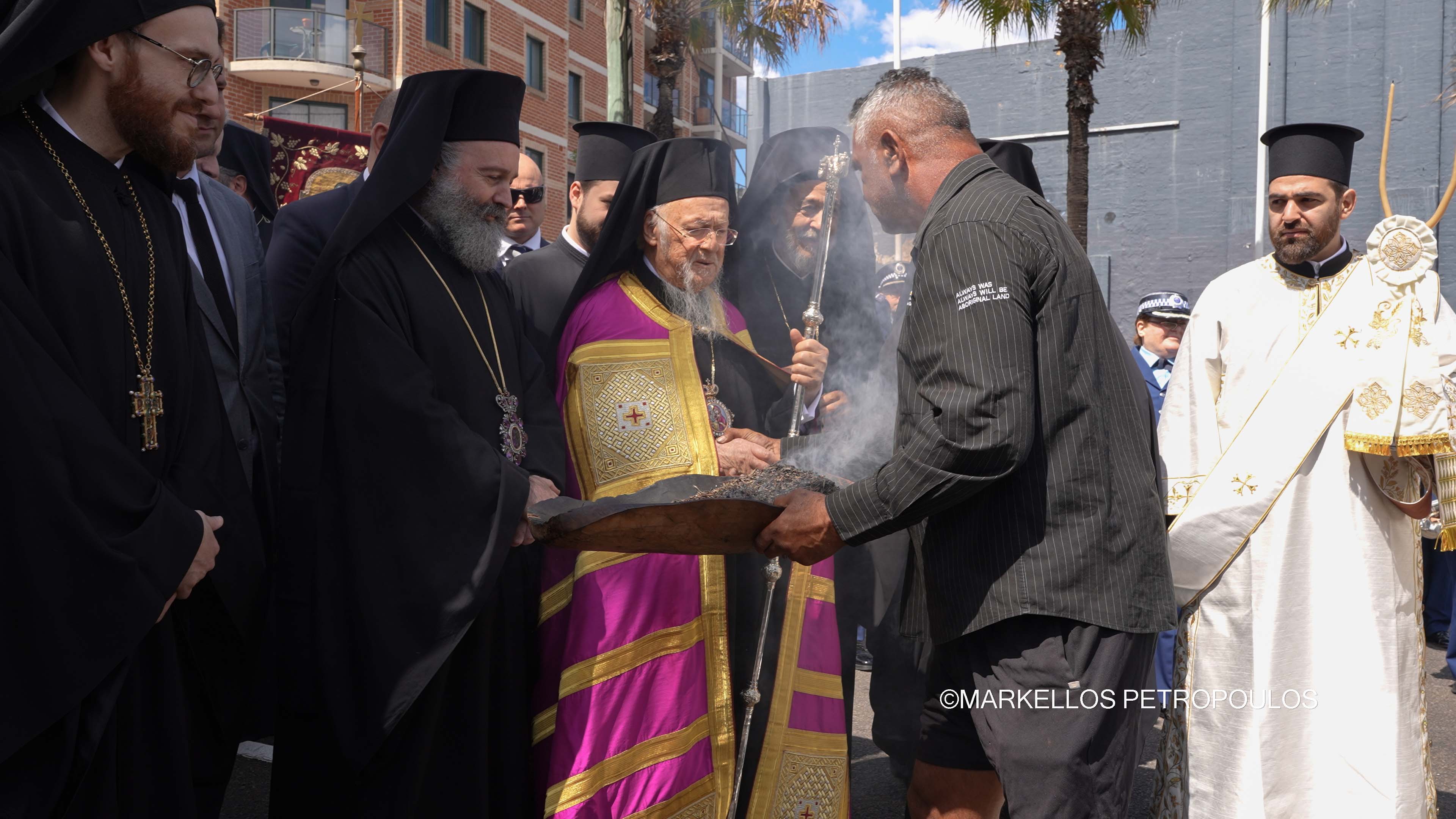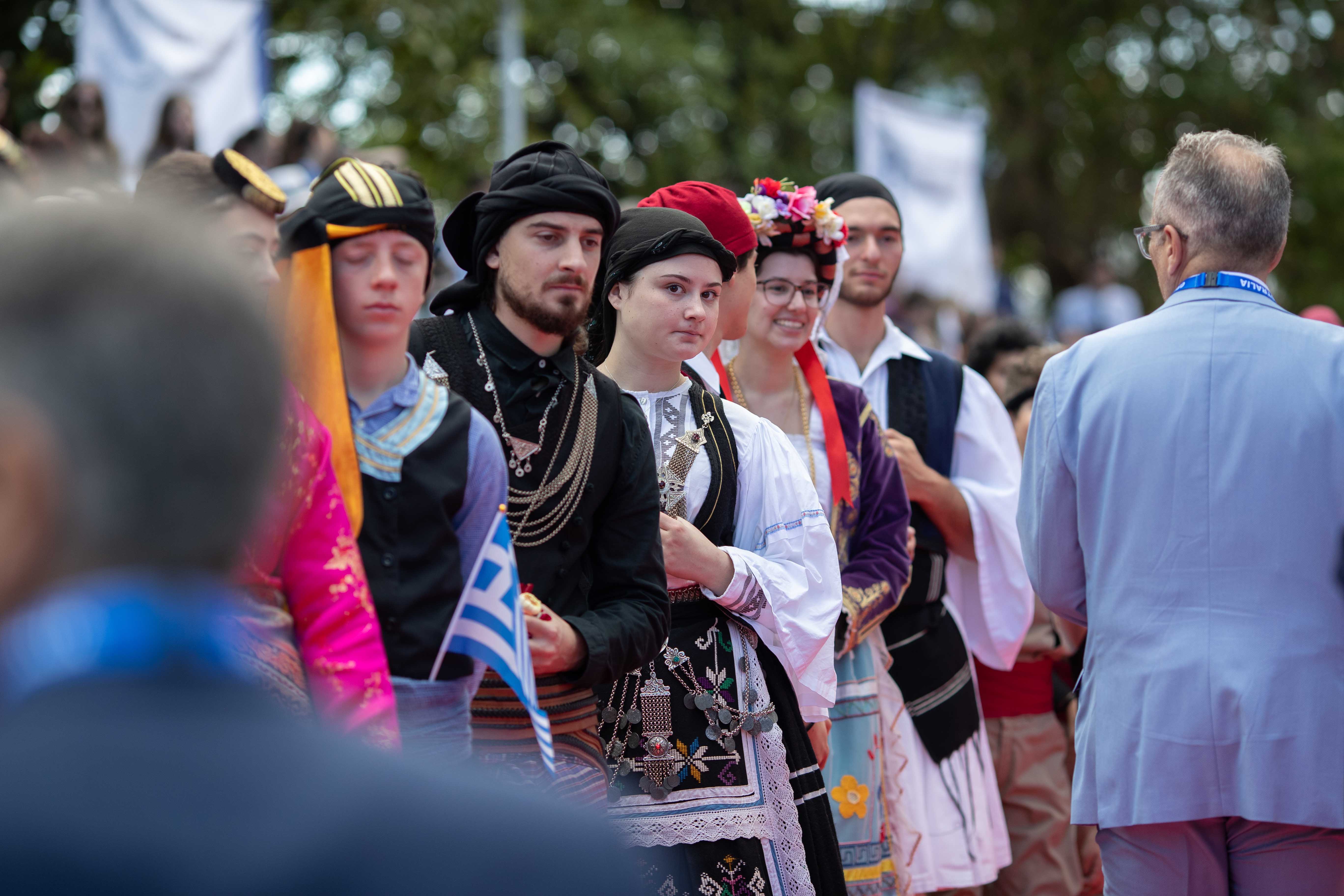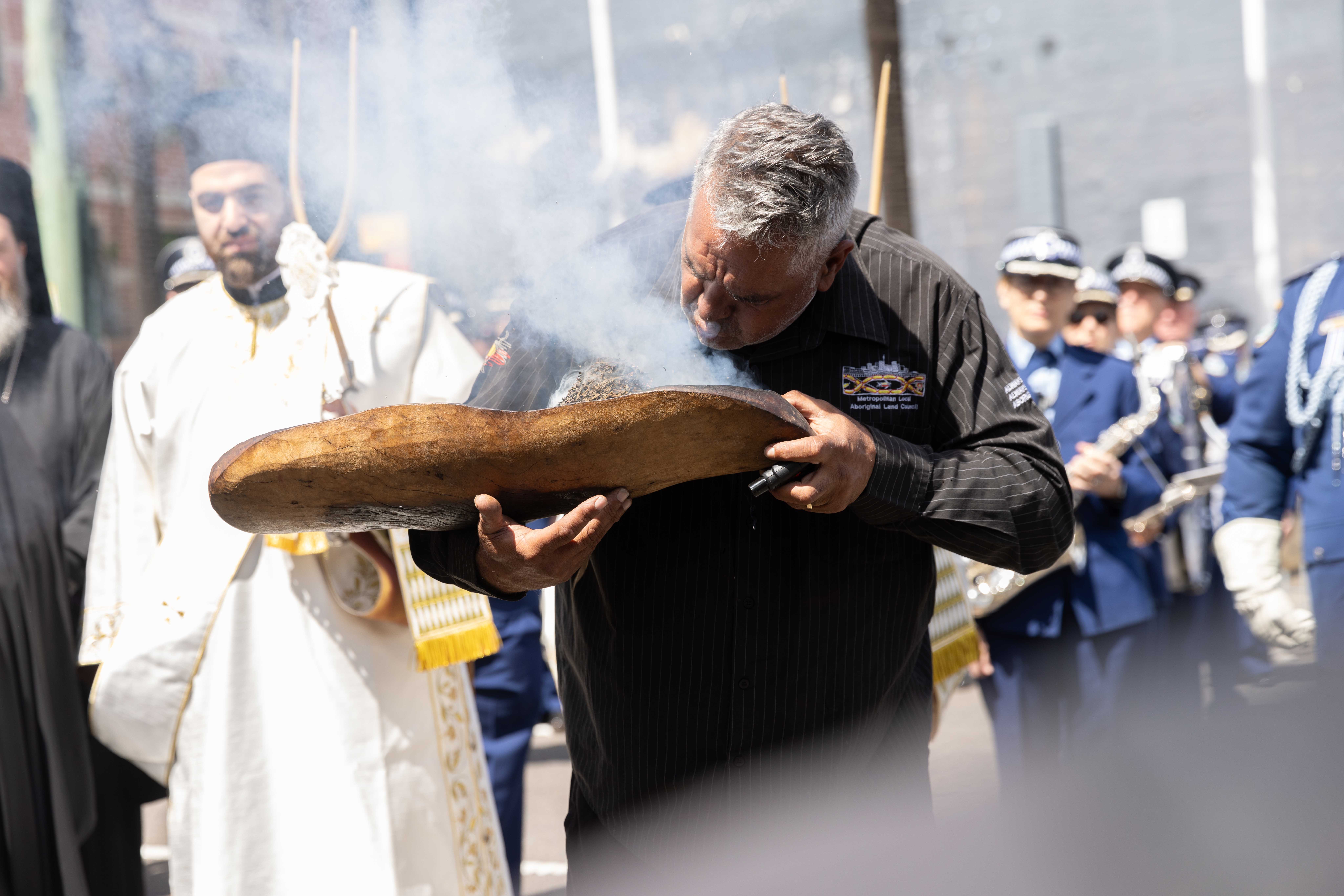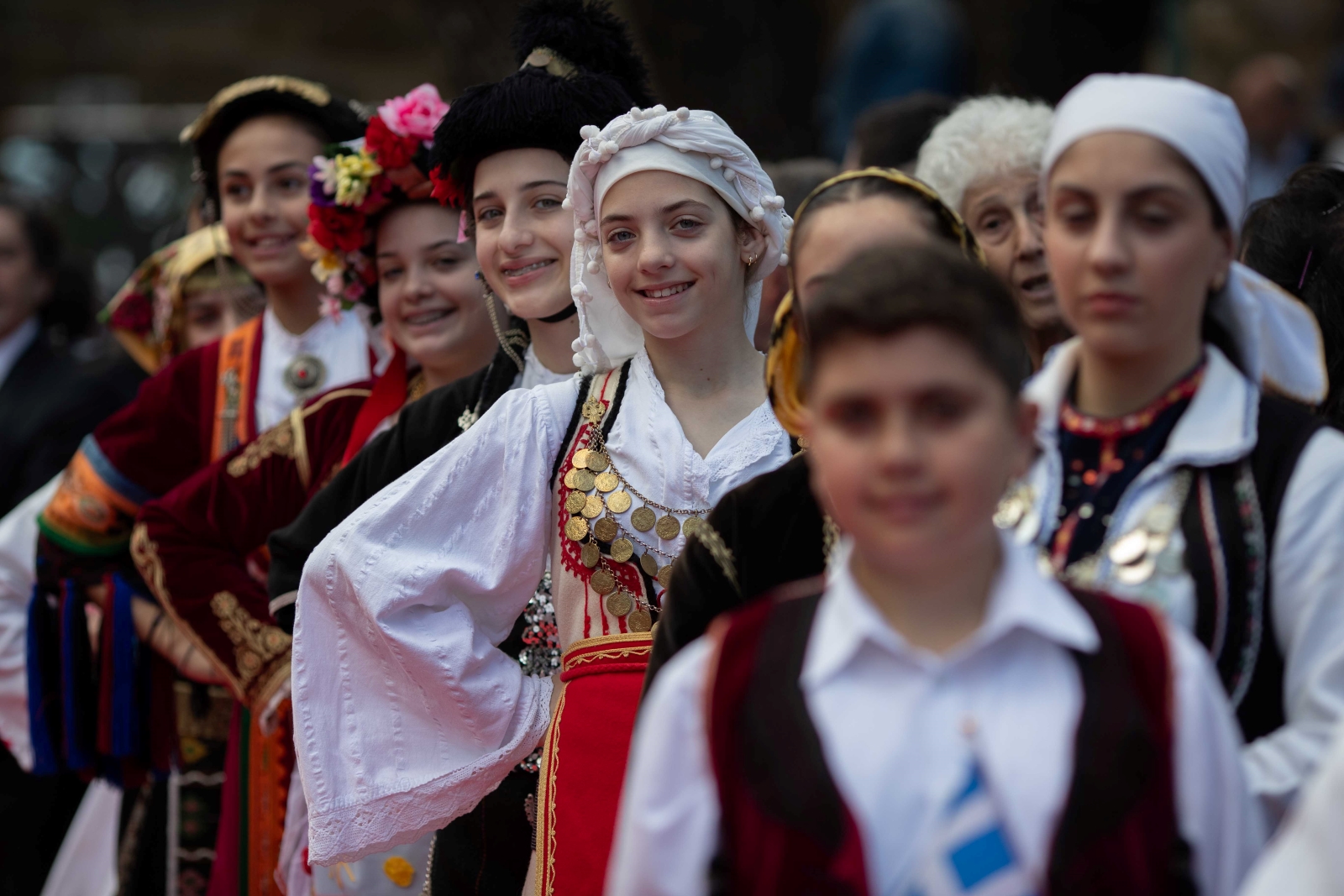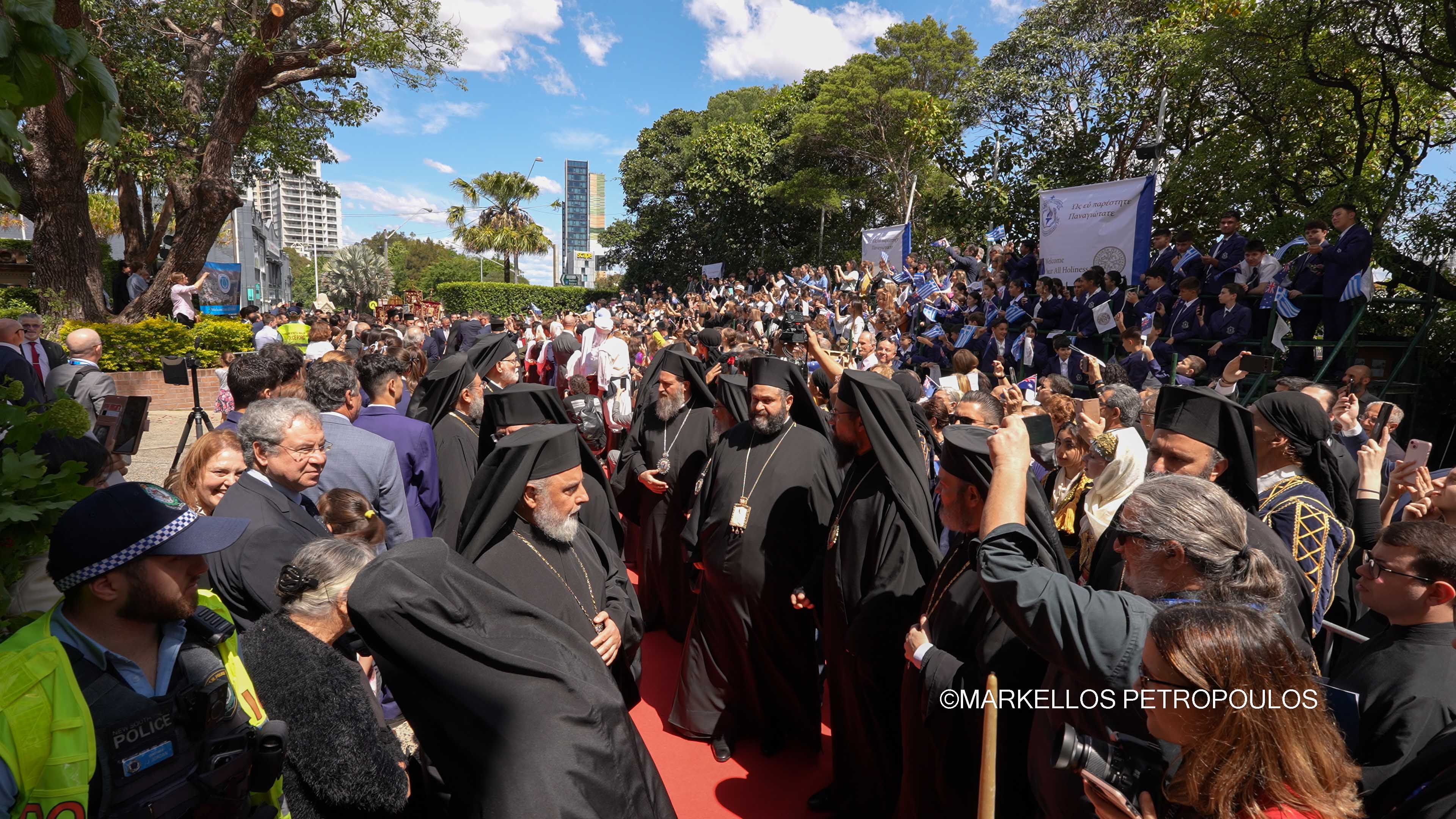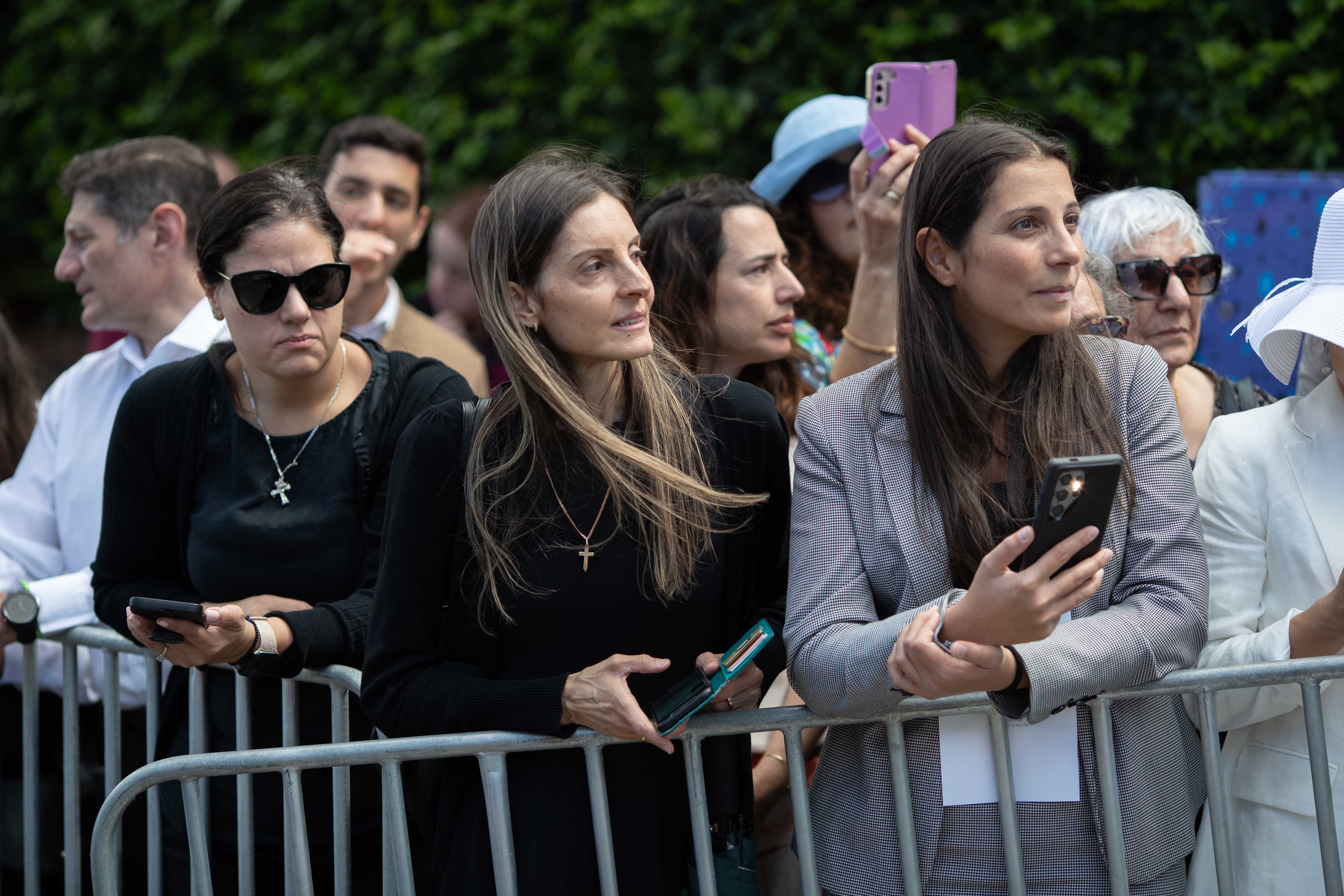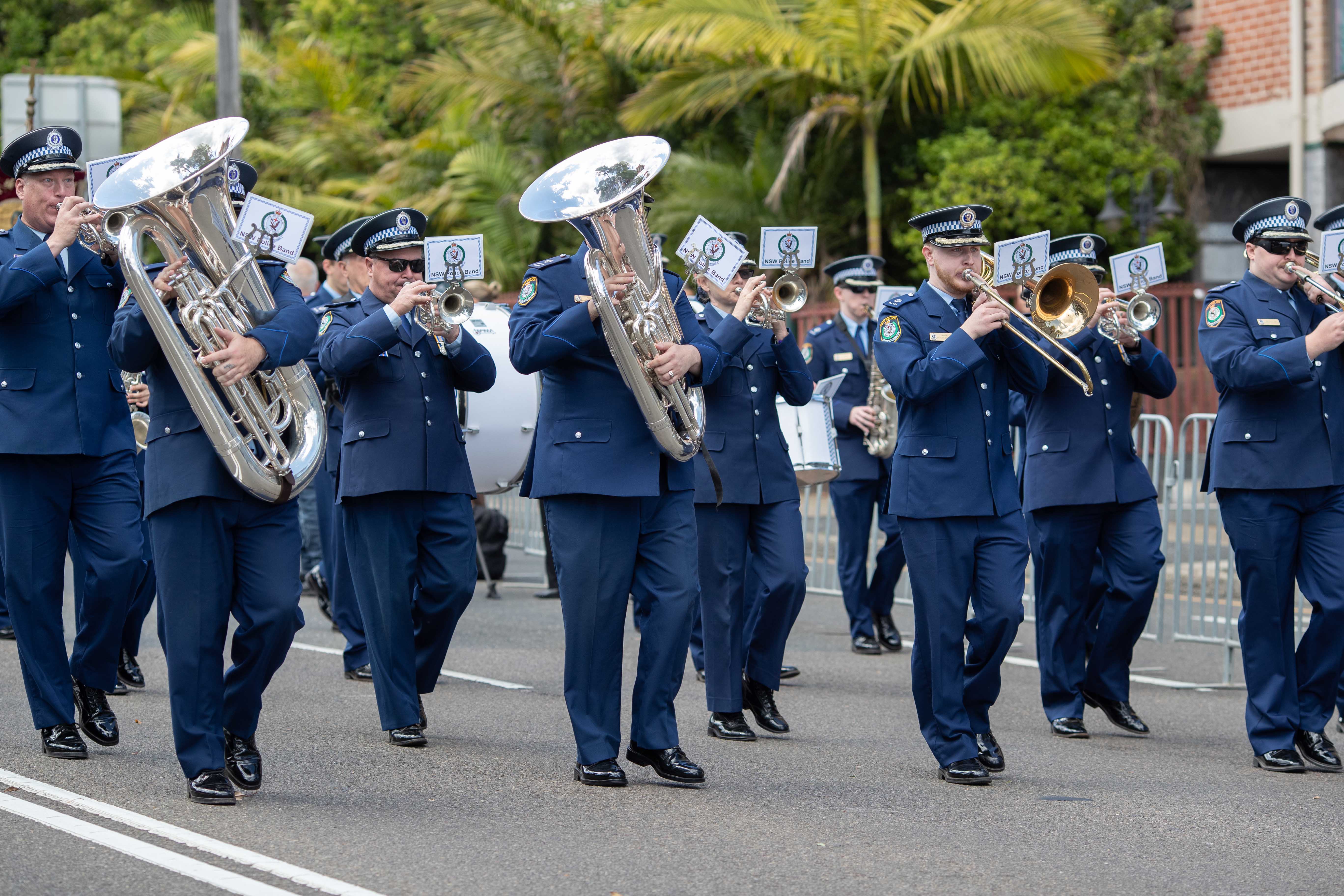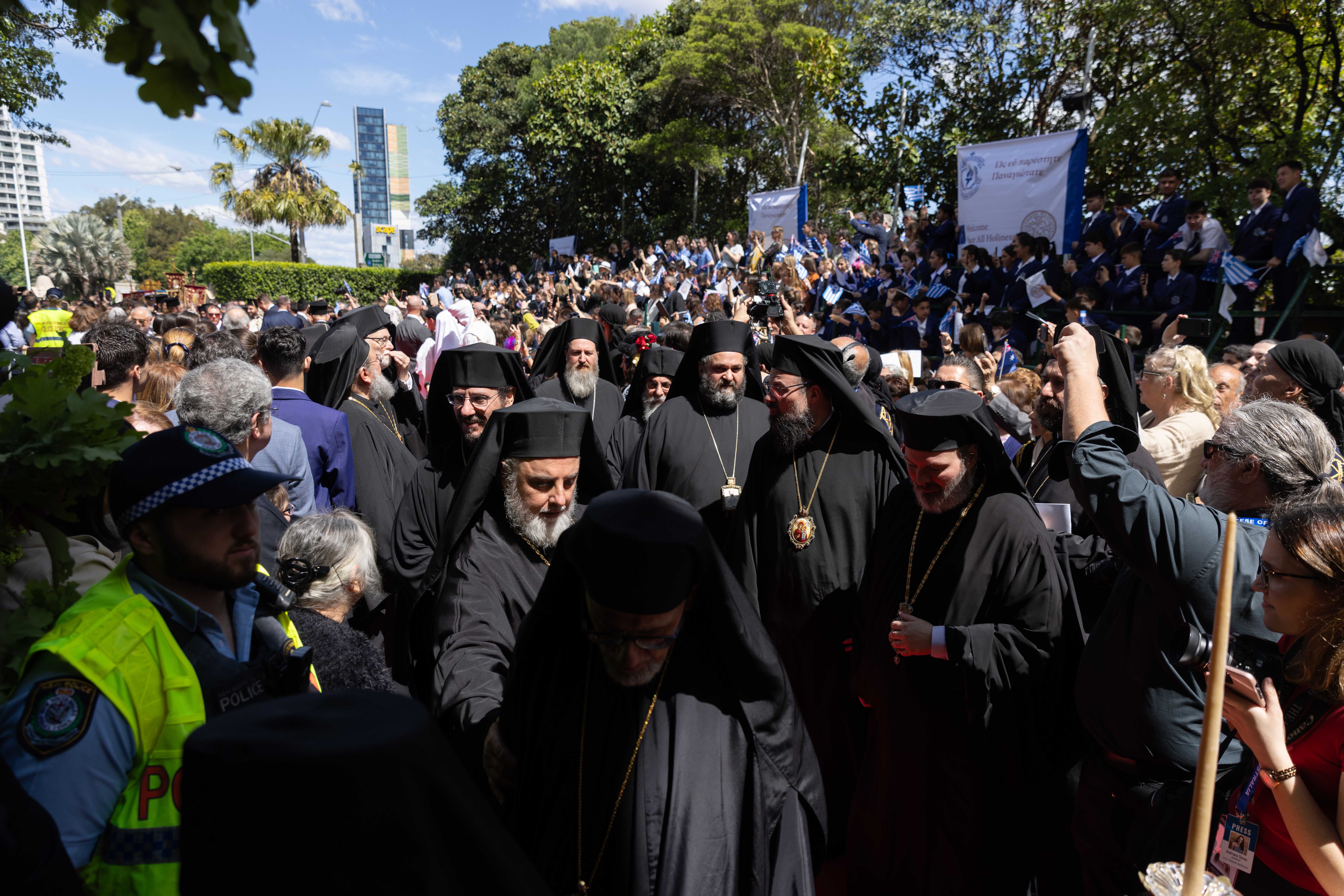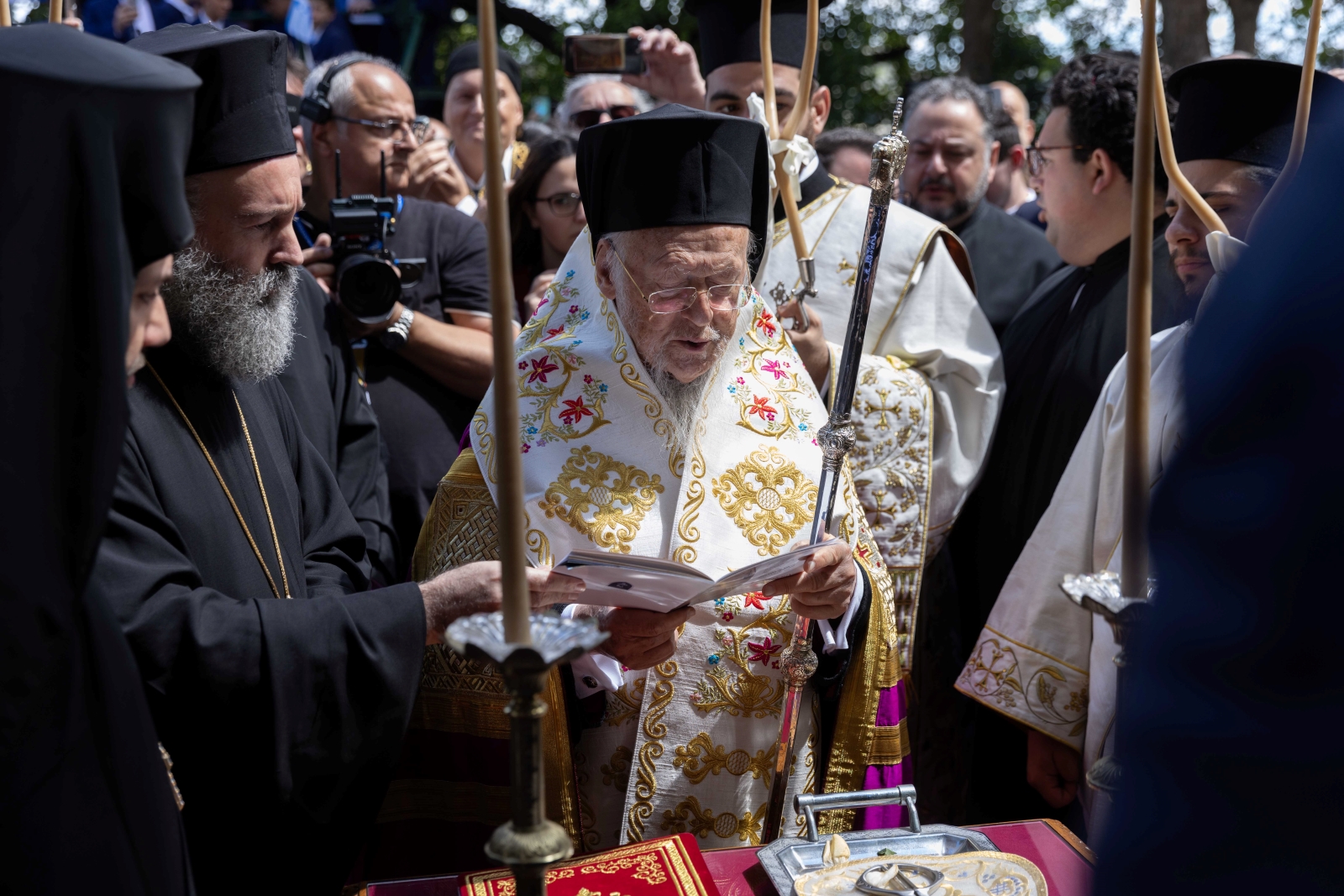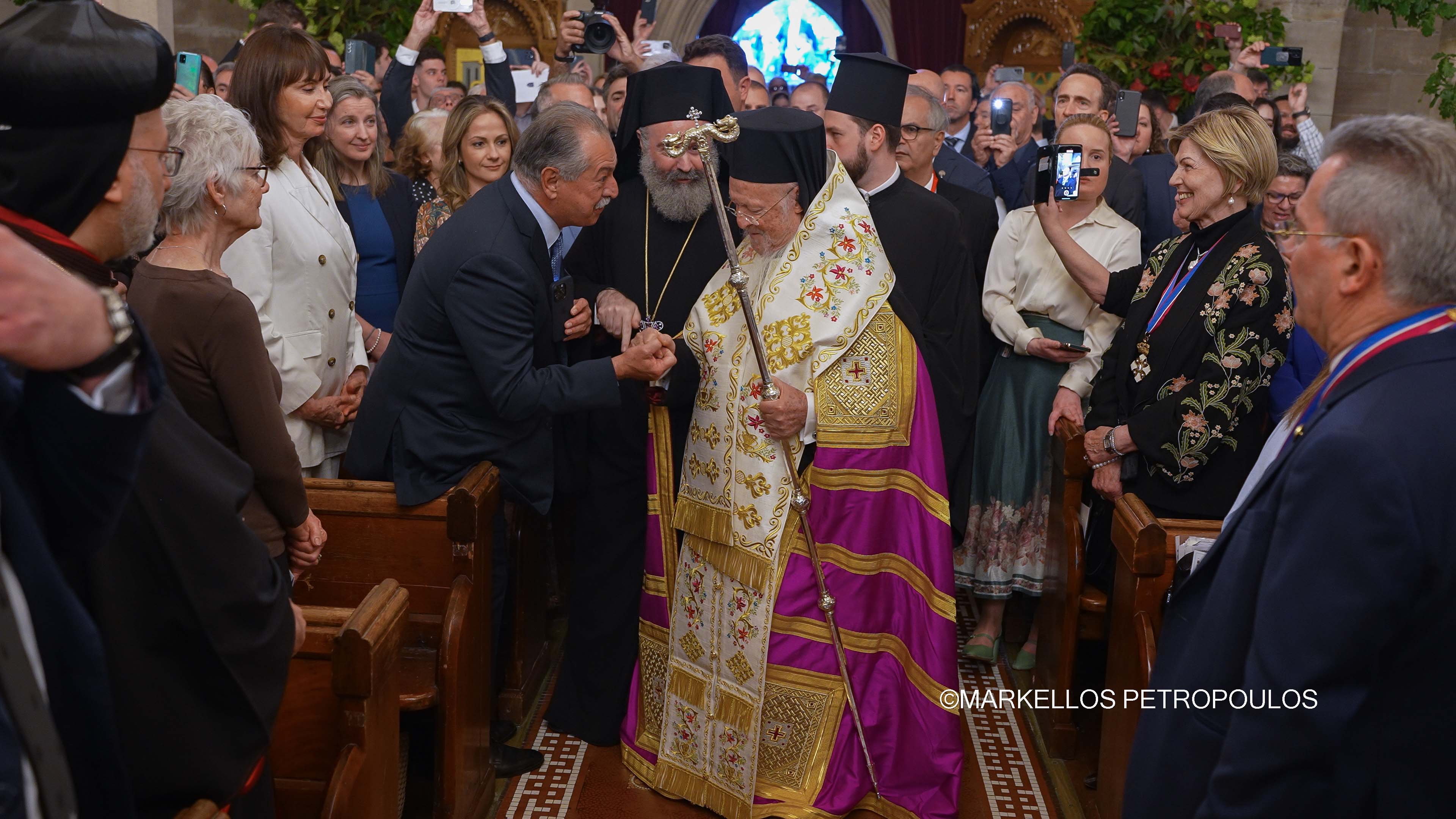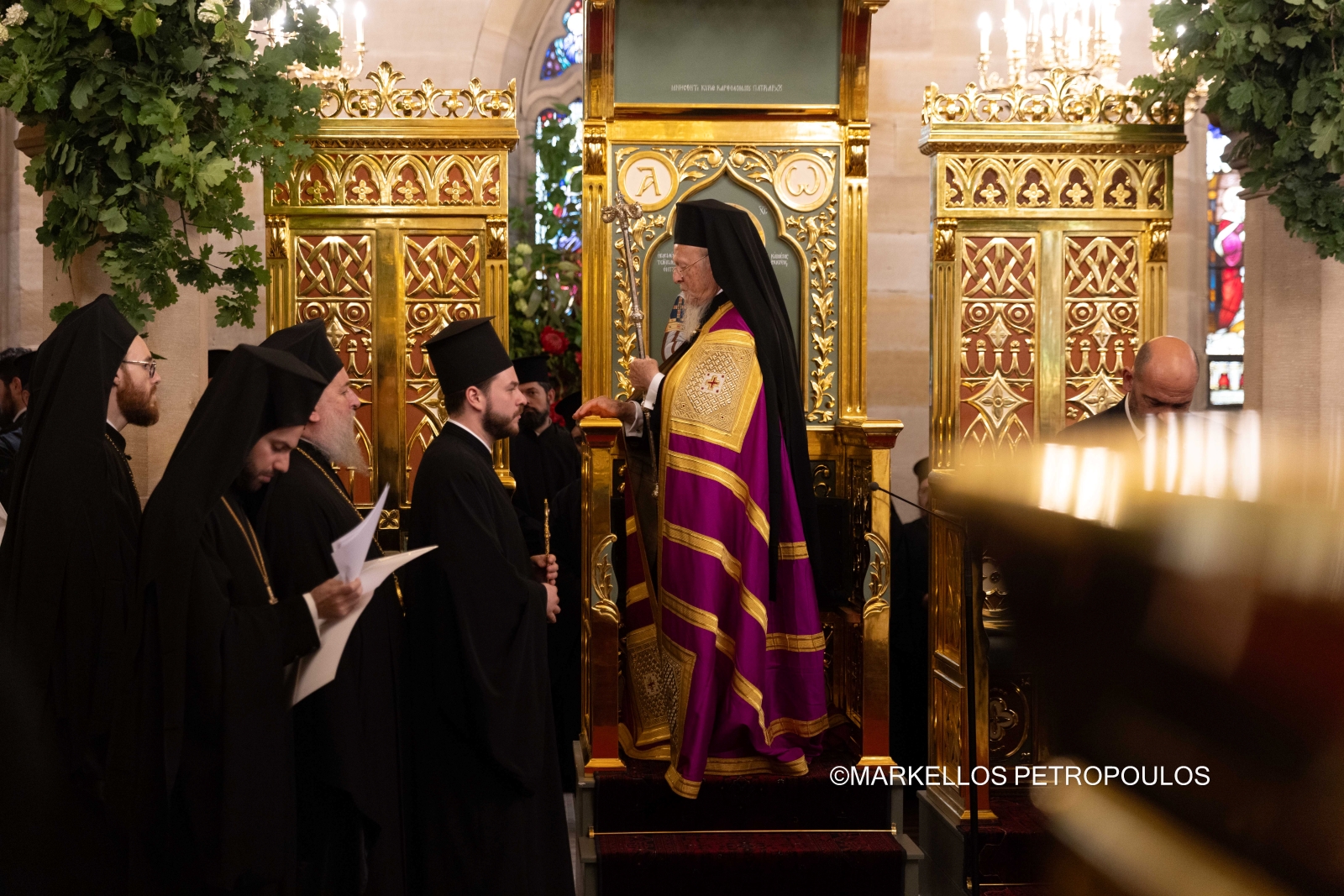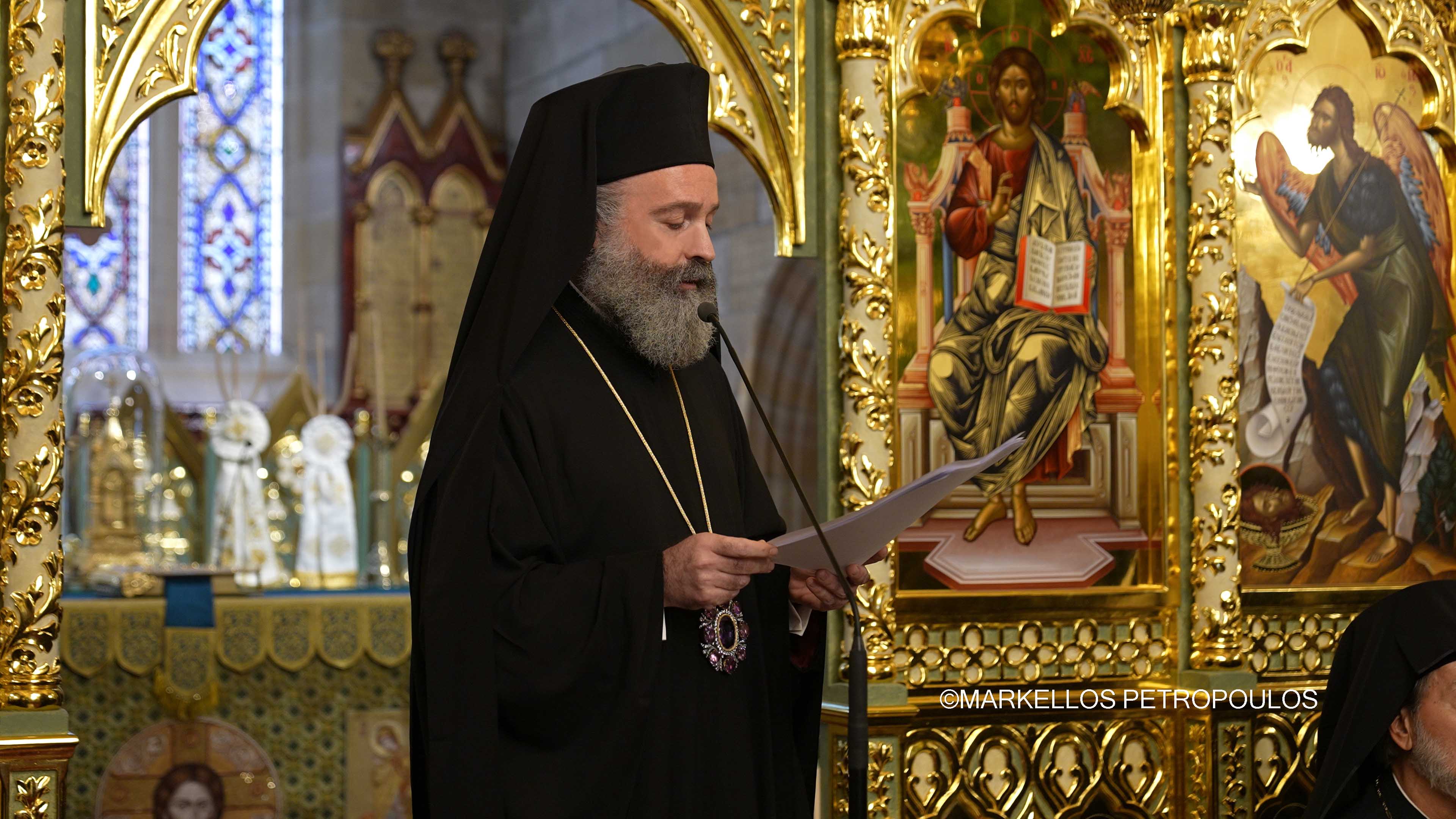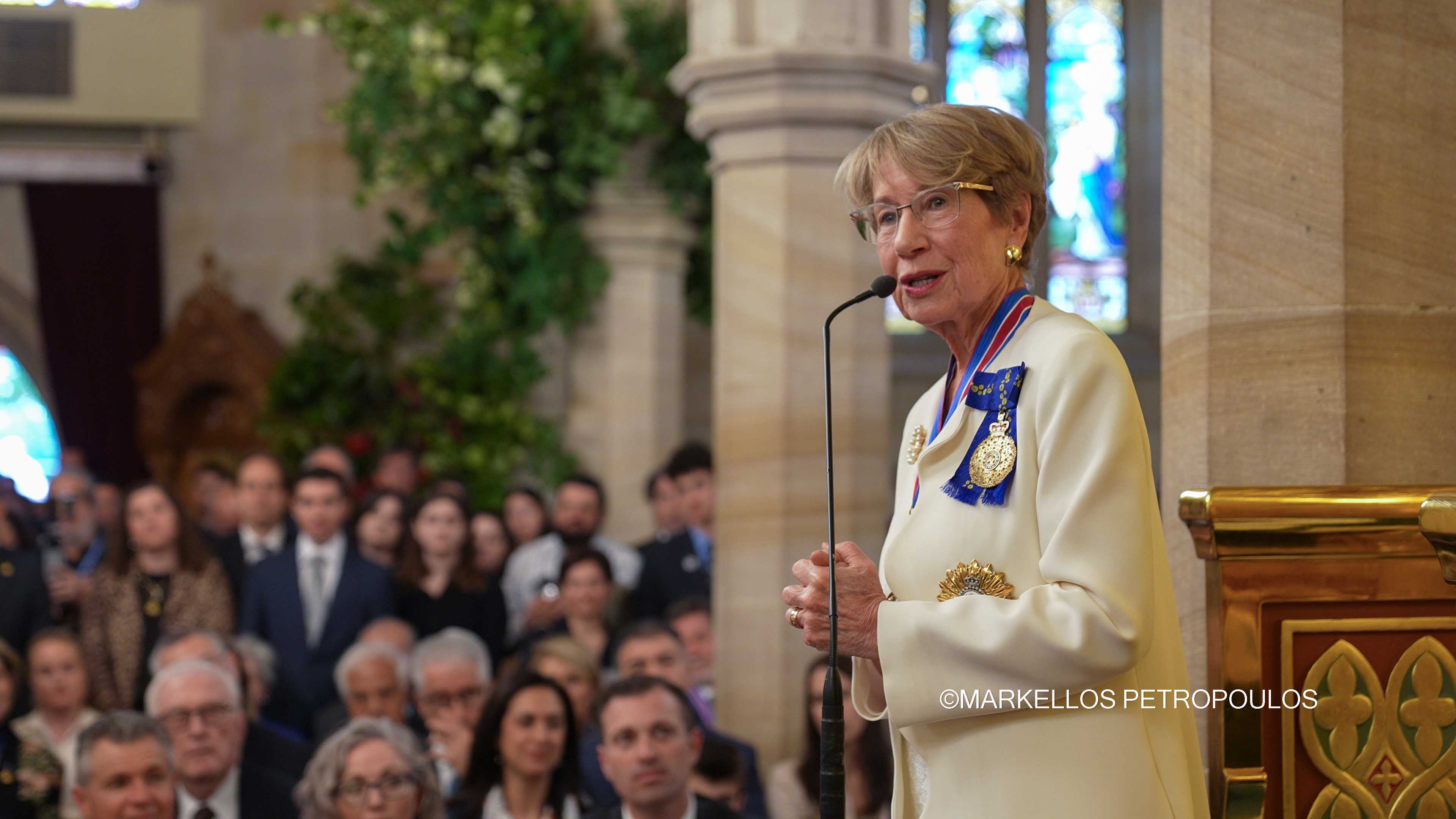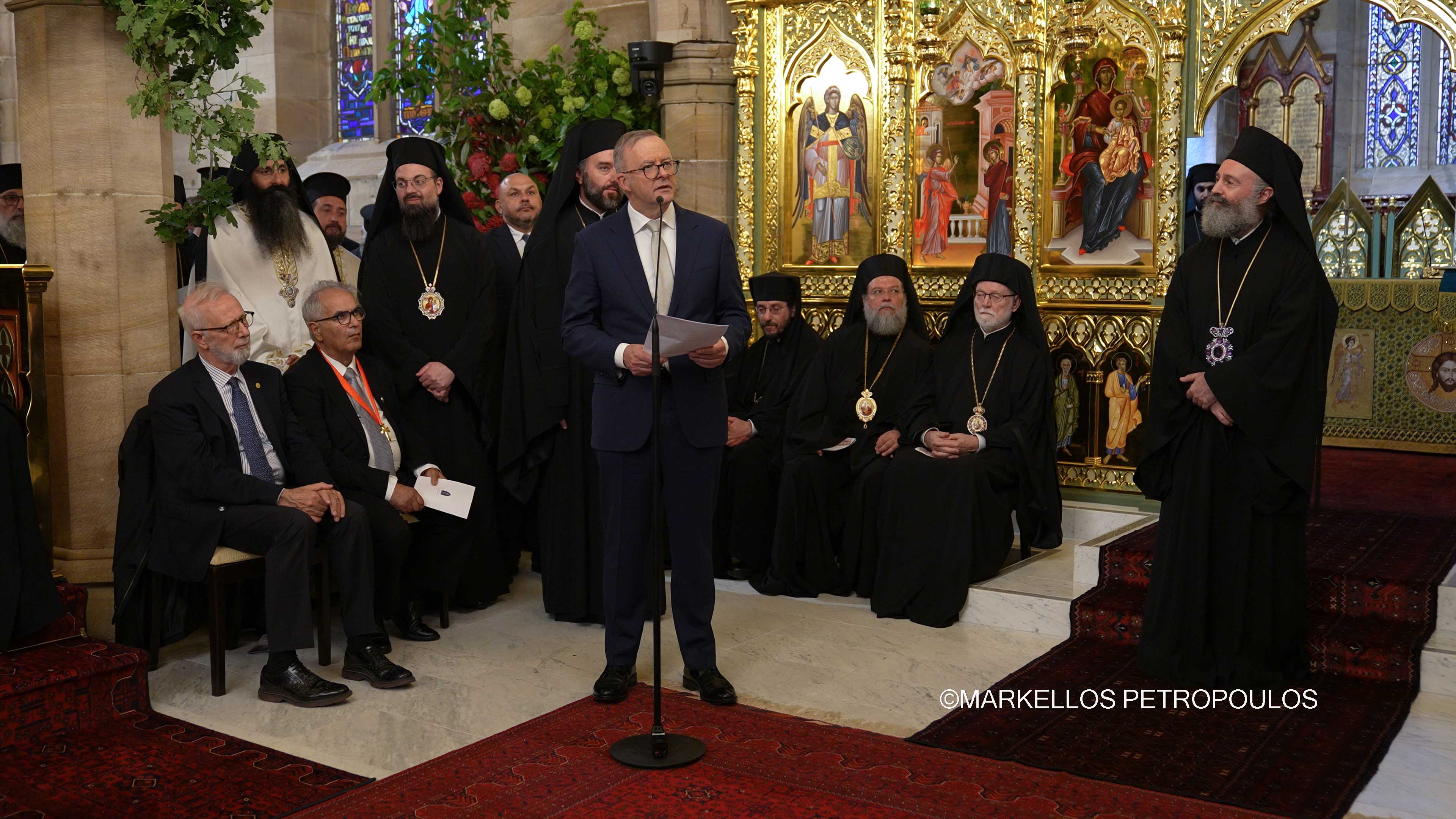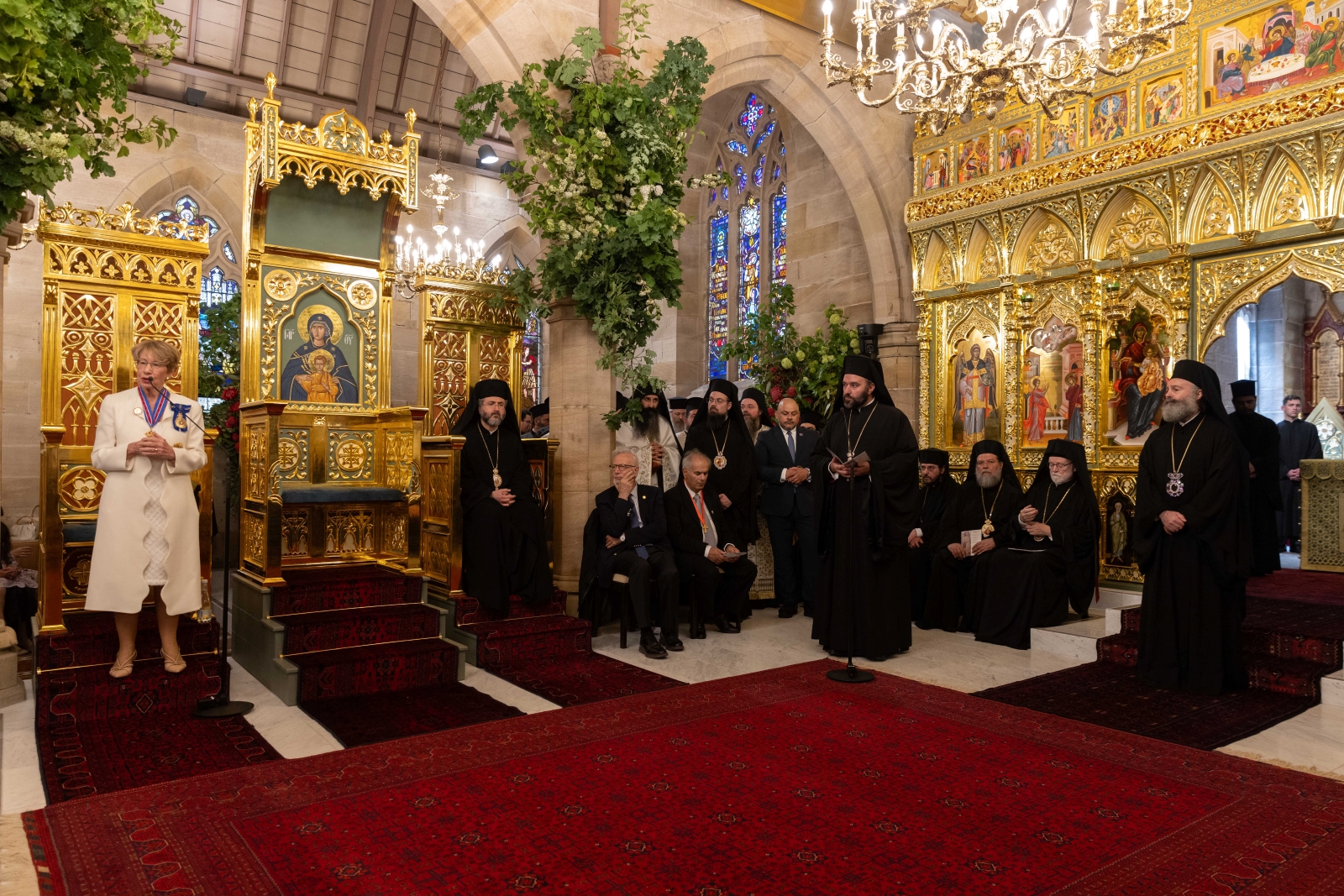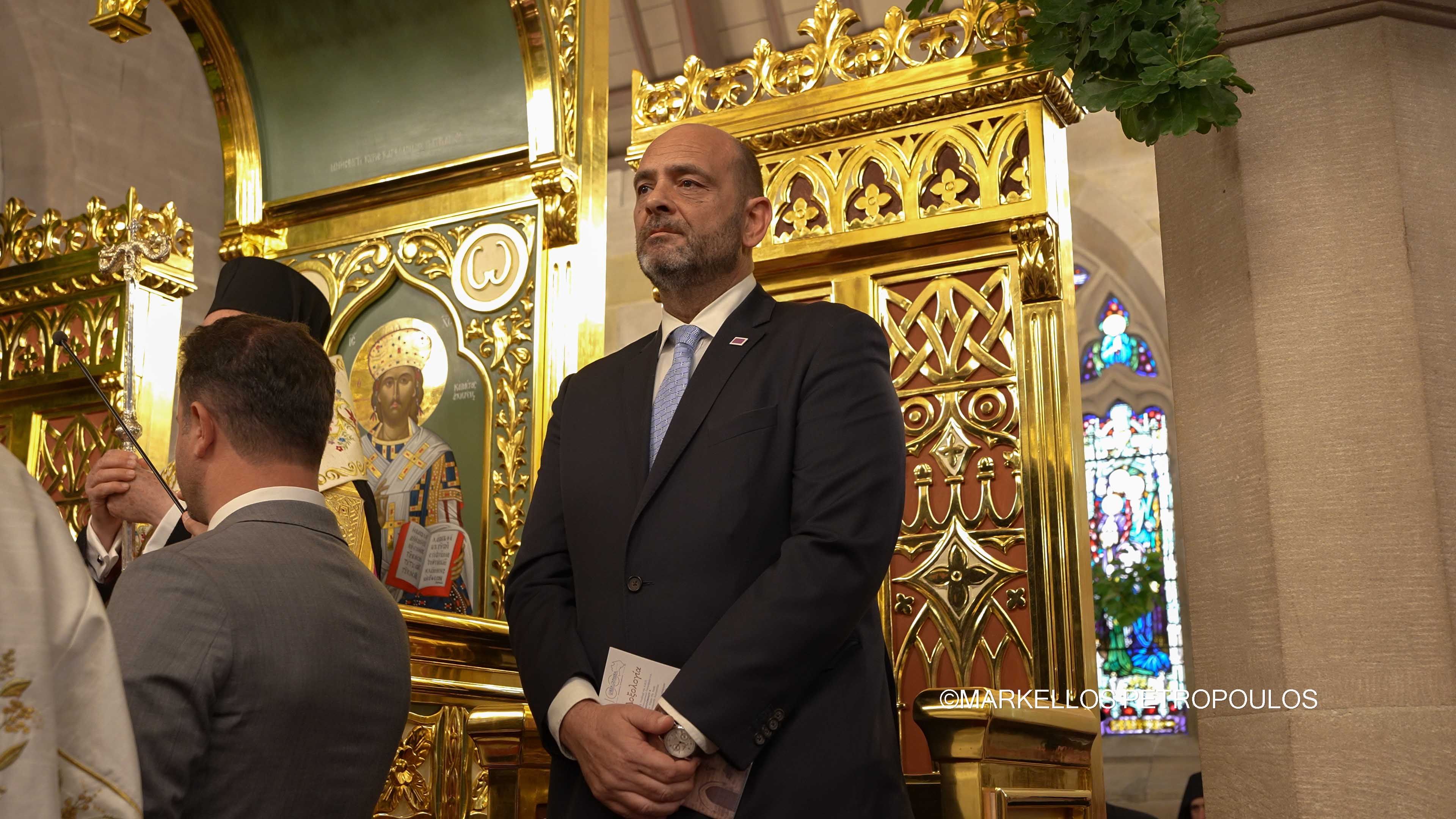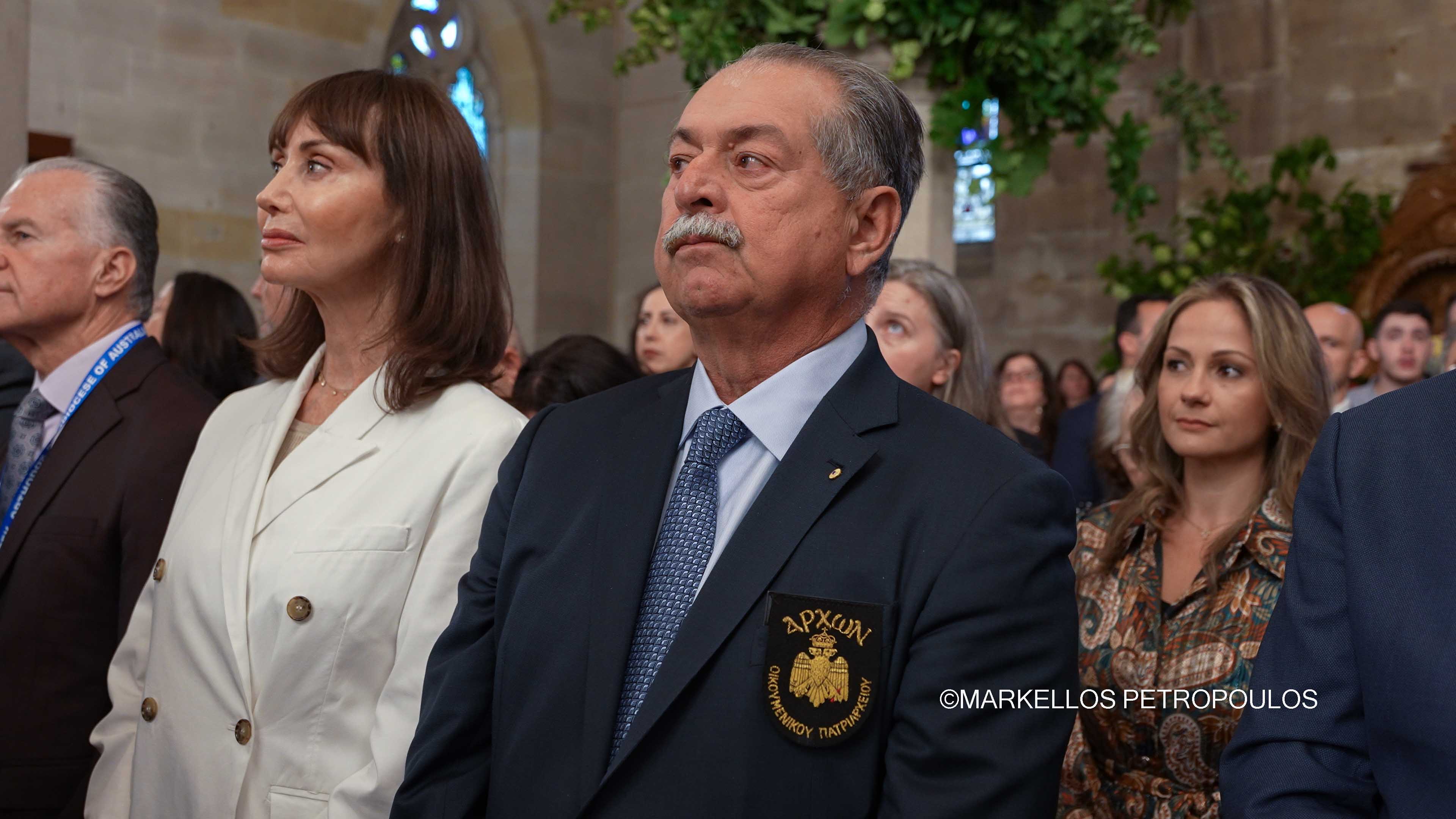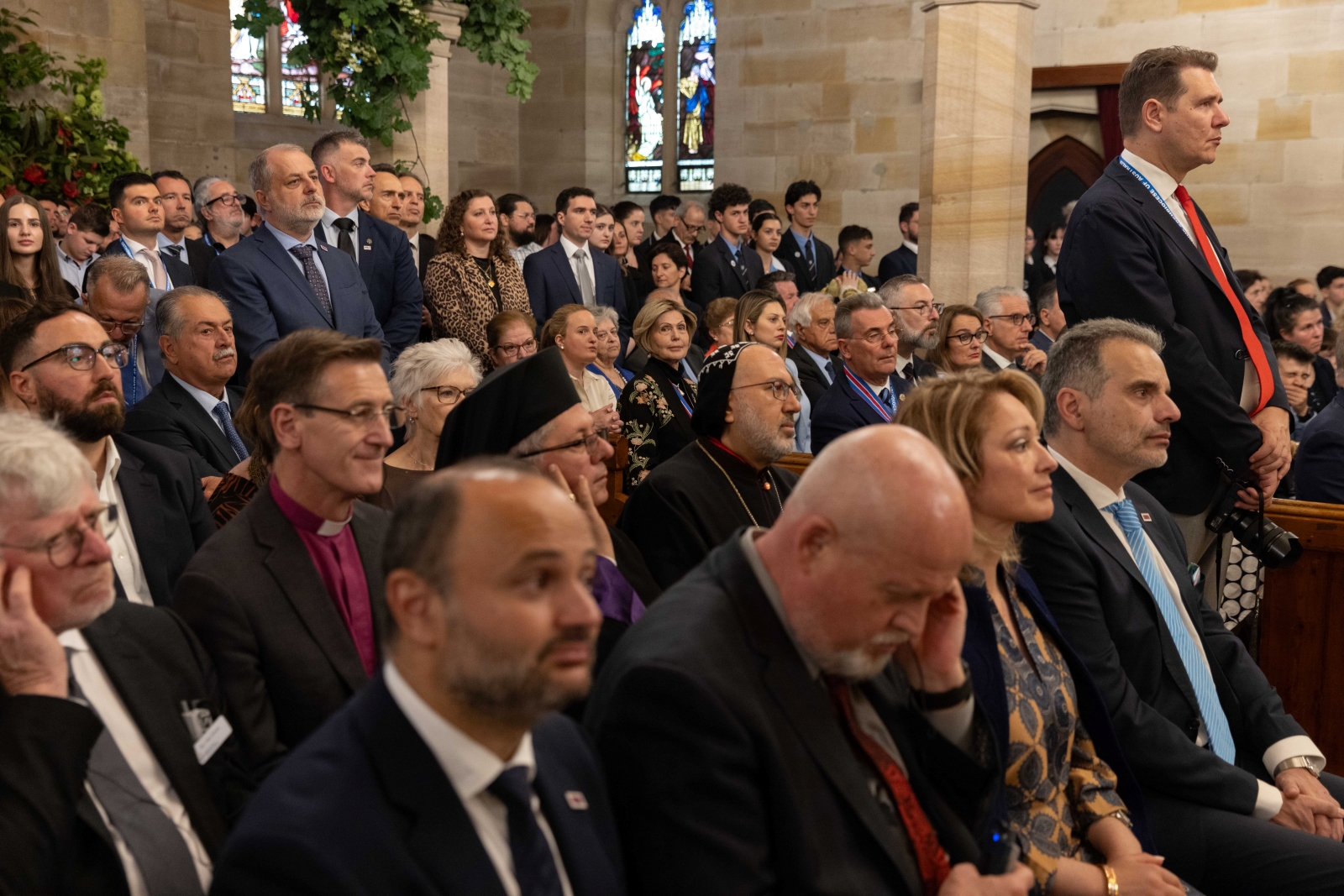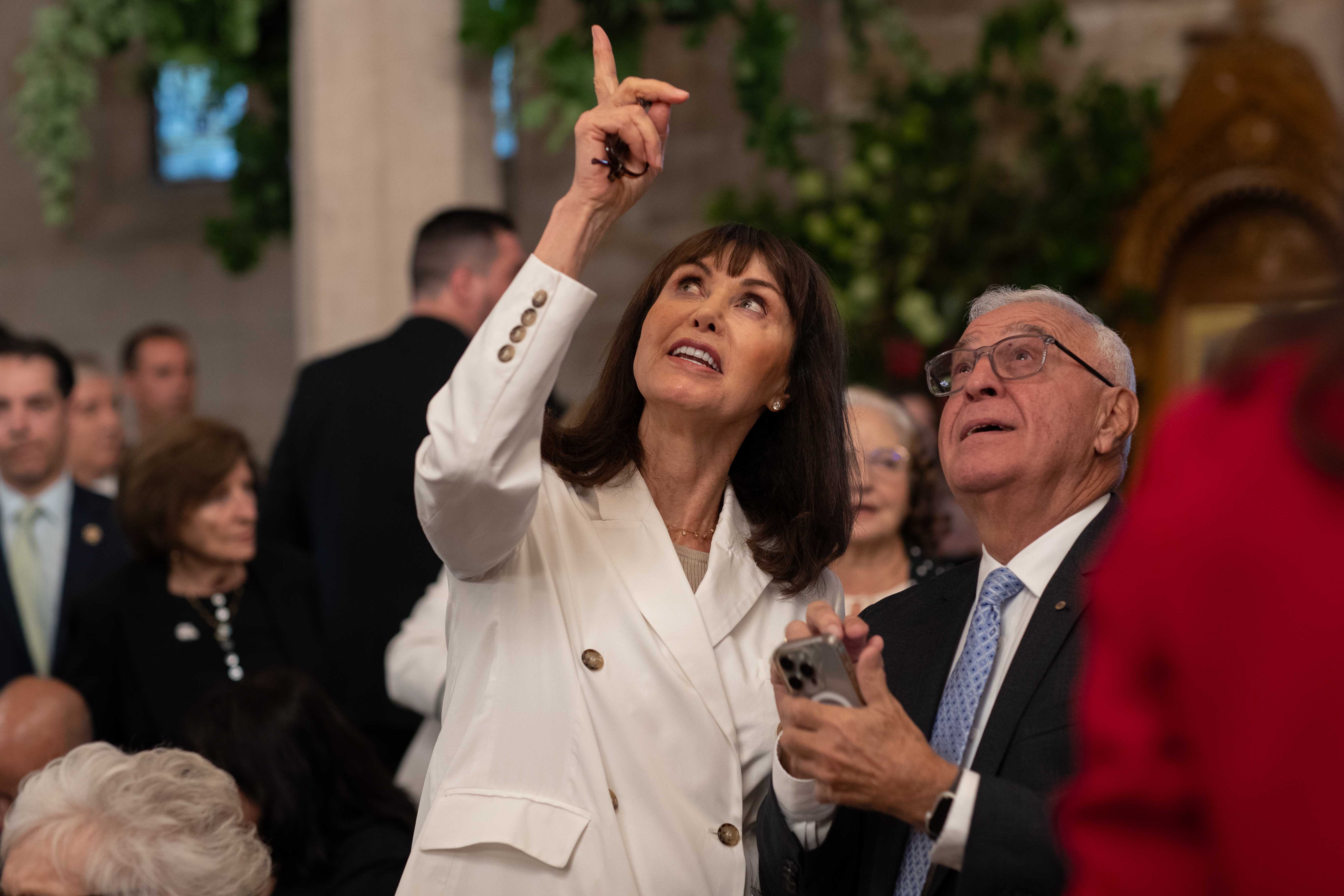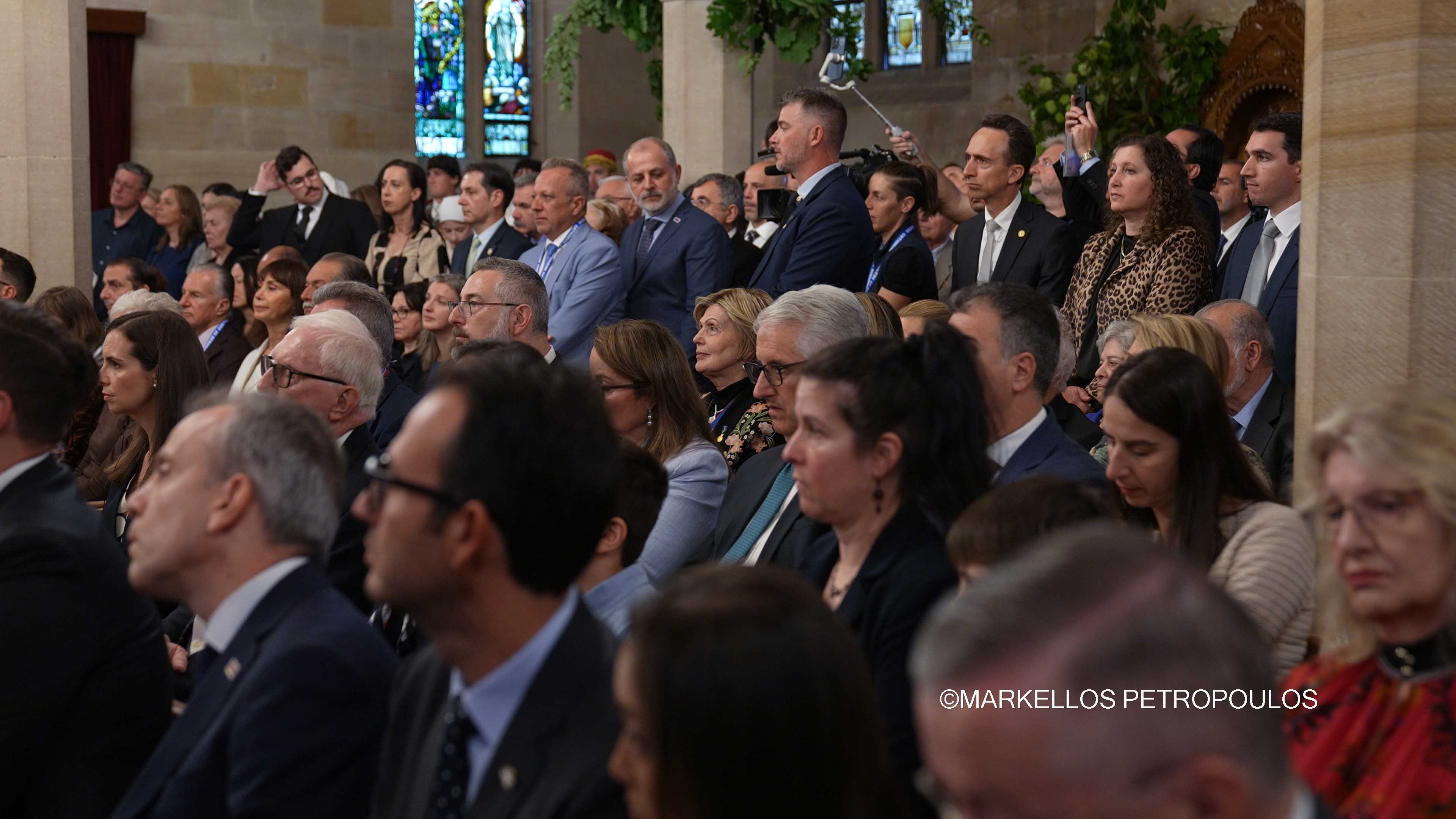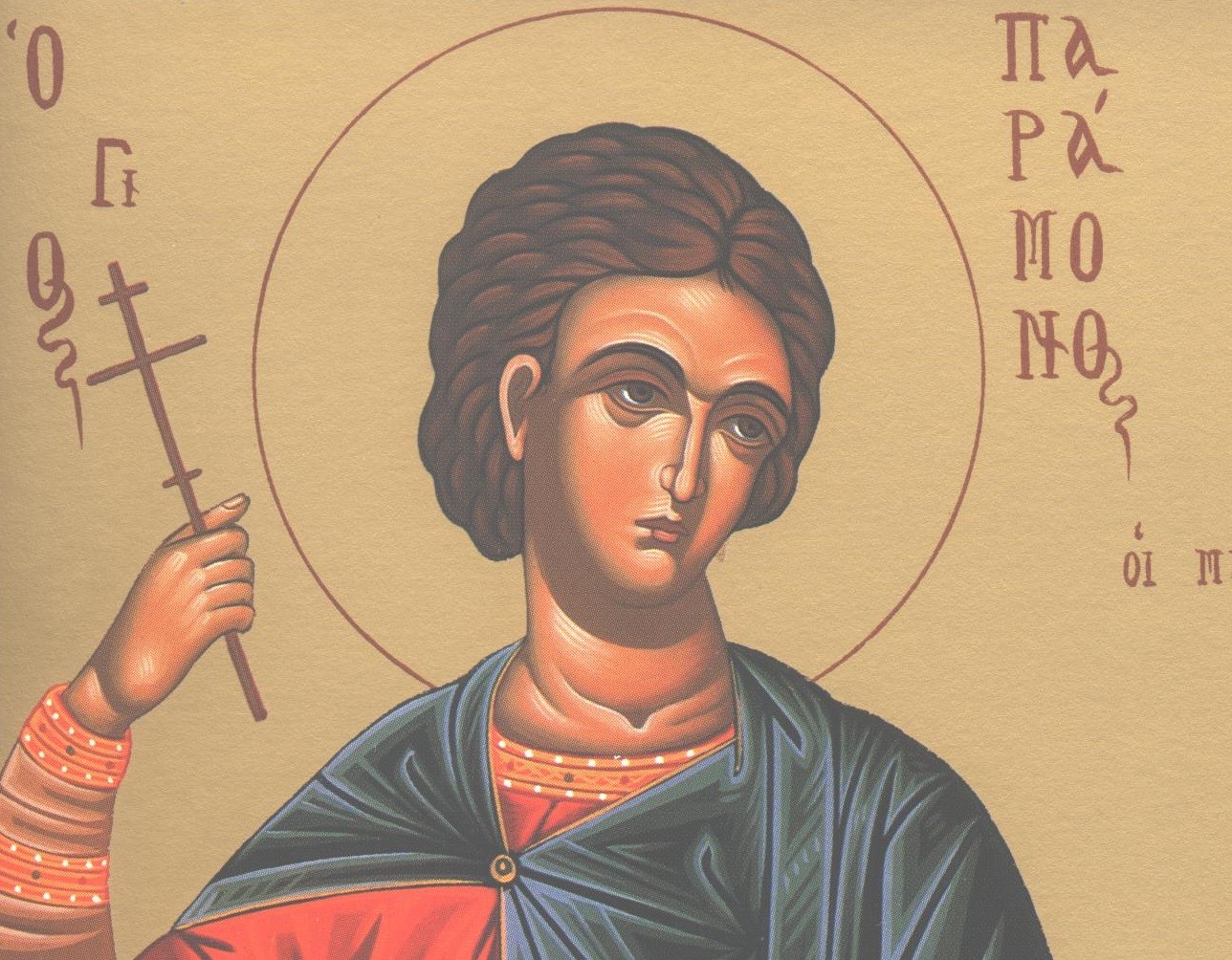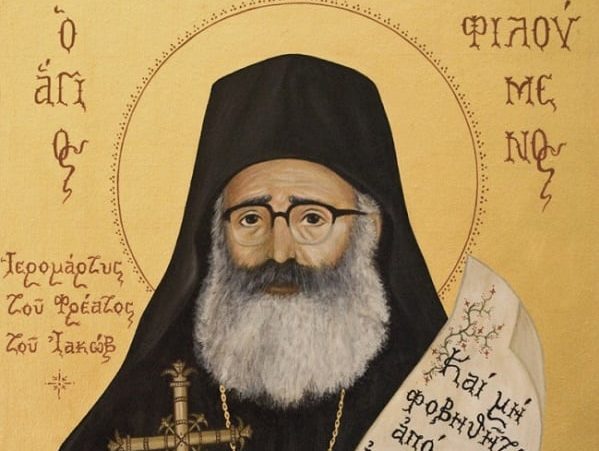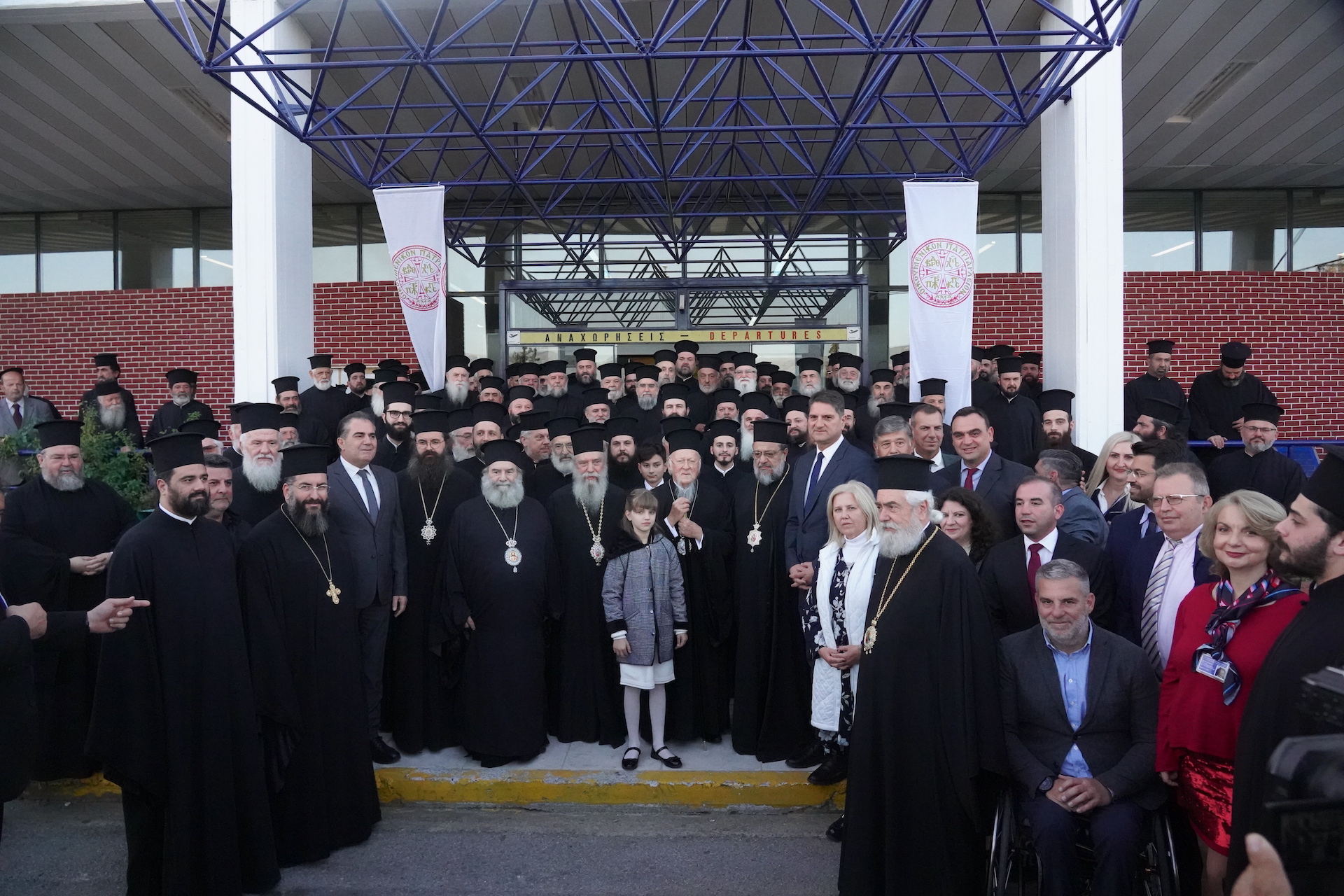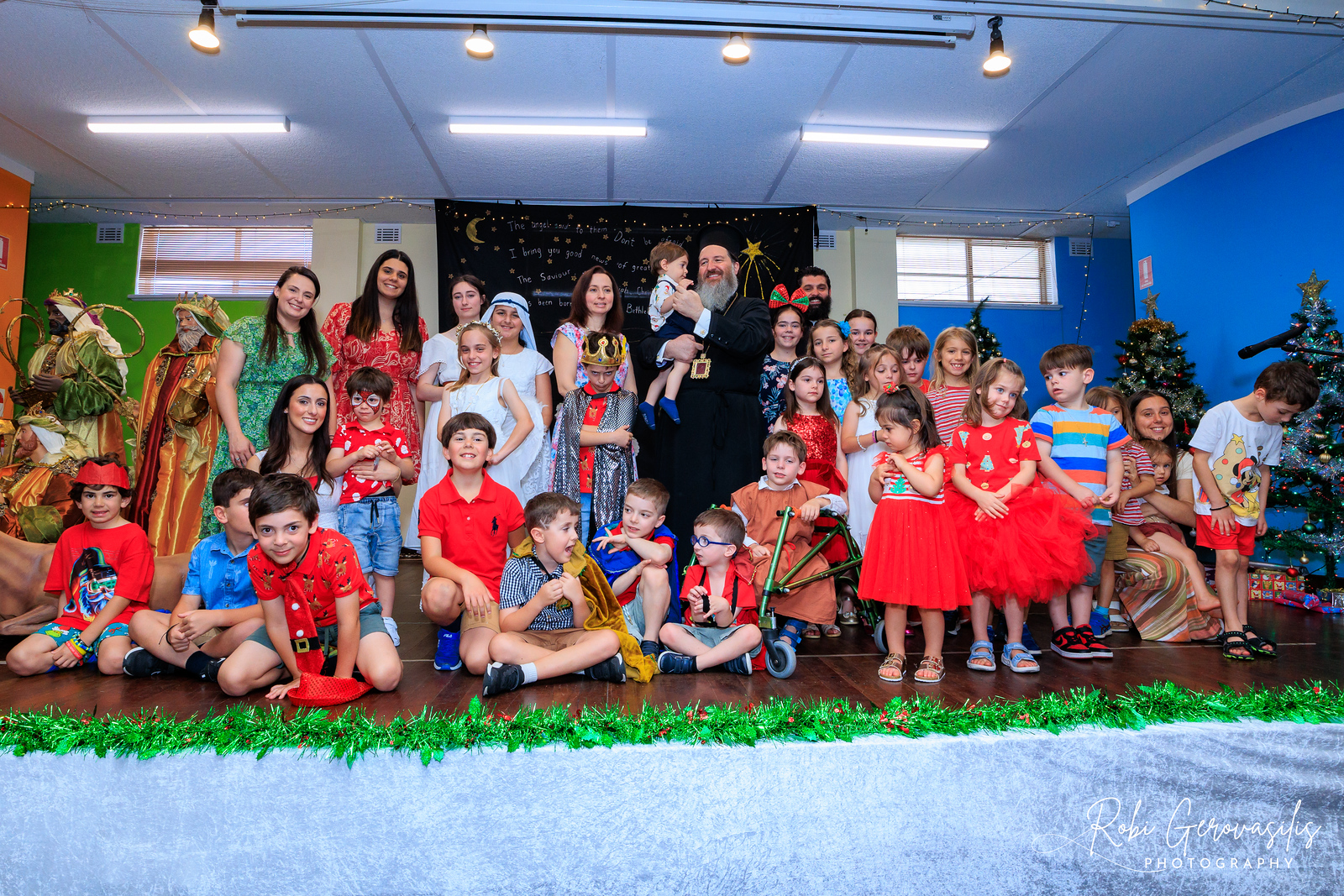“Christ’s Church shines and radiates” in the heart of Sydney
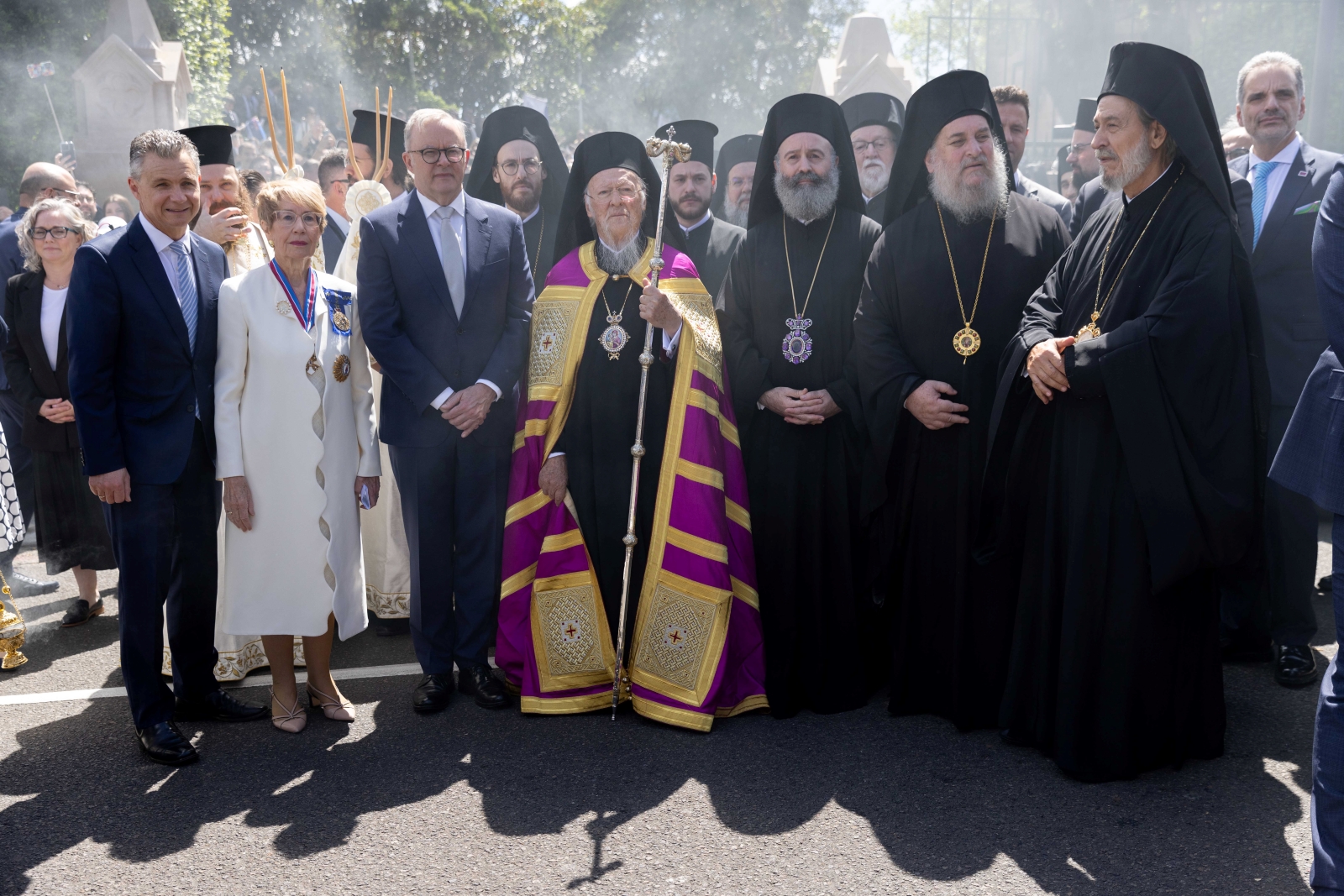

“‘Christ’s Church shines and radiates”. This phrase, taken from the hymn of the Praises for the Sunday of Orthodoxy, was quoted by His All-Holiness, the Ecumenical Patriarch Bartholomew, in the bright and festive atmosphere that prevailed on the morning of Saturday, 5th October, during the official Doxology marking His reception in Australia, held in the historic Holy Cathedral of the Annunciation of Our Lady, in the heart of Sydney. The Doxology was preceded by the official opening of the newly renovated and beautified Cathedral.
Both the interior of the Cathedral and the surrounding area, as well as nearby streets, were filled with thousands of devout Christians who hurried to welcome the Patriarch, express their love and respect, and receive His blessing. Upon His arrival, accompanied by His Eminence Archbishop Makarios of Australia, the Patriarch was greeted with enthusiastic cheers and prolonged applause, while students showered Him with rose petals to the joyful sound of bells.
The ceremony, in honour of the historic apostolic visit of the Primate of the Orthodox Church to the fifth continent, was attended by the Governor of New South Wales, Her Excellency the Honourable Margaret Beazley AC KC, the Australian Federal Prime Minister, Mr Anthony Albanese, and the Deputy Minister of Culture of Greece, Mr Iason Fotilas, representing the Greek Government. From the local Church, Archbishop Makarios was joined by the Venerable Bishops, members of the Holy Eparchial Synod. Also present were the Hierarchs and Clergy, members of the Patriarchal entourage, the Holy Clergy and Monastic Communities of New South Wales, Ambassadors and Consuls, Australian Ministers, Members of Parliament and Senators, Archons of the Ecumenical Patriarchate, Academics of Saint Andrew’s Theological College, Presidents of Parishes-Communities and benevolent institutions, members of the Philoptochos Associations, Principals, teachers, and students from schools, among others.
His Eminence Archbishop Makarios welcomed the Patriarch in the church, beginning his address with a quote from the Resurrection service: “Now all is filled with light, both heaven and earth, and the regions beneath the earth,” emphasising that “the joy, the jubilation, and the spiritual delight of Your spiritual children here in Oceania is Paschal, and their enthusiasm truly points to the empty tomb of the Resurrection and the Upper Room of Pentecost”.


The Archbishop then briefly described the historical journey of the Holy Archdiocese of Australia, recalling one by one his blessed predecessors, noting that since 2019, he himself has tried to follow in their blessed footsteps, “steps of peace, unity, reconciliation, healing of the broken, uplifting of the shattered, and reuniting of the estranged”. He concluded by expressing his belief that the hundred-year journey of the Holy Archdiocese of Australia “justified the Patriarchate’s decision to establish it, as during the past century, it proved itself worthy of the expectations of the Mother Church of Constantinople”.
The Archbishop also described the renovations carried out in the Holy Cathedral of Sydney and expressed optimism about the future of the local Church, always under the spiritual care of the Sacred Centre of Orthodoxy. “The canonical reference of the fifth continent to Your Omophorion is our greatest blessing and boast in the Lord,” he said, addressing the Patriarch, and concluded with heartfelt words about His revered person: “His Patriarchal ministry did not confine itself to human plans, was not limited by common logic, and was not advanced by perishable forces of this world. Patriarch Bartholomew is drawn by a power that constantly increases. He is a distinctive figure with a special mission, something that rarely happens in human history”.
Following this, greetings were offered by the Governor of New South Wales, Mrs Margaret Beazley, and the Prime Minister, Mr Anthony Albanese, both praising the contribution of Hellenism and Orthodoxy to the Australian Nation. Mr Albanese specifically announced tangible support for the development project of the Holy Archdiocese, which includes the complete renovation of its central offices and facilities in Redfern, Sydney, including the renovation of St Andrew’s Theological College and the creation of a Museum of Hellenism in Australia. For this purpose, the Federal Government will provide funding of 25 million dollars.
In his response, the Ecumenical Patriarch first expressed his paternal satisfaction, as “we observe that here, Romiosini is flourishing and bearing even more fruit” – as the popular muse says – and behold the noble choice of the Throne’s Charter, the Holy Archdiocese of Australia, beloved daughter of the Great Church, which is led and helmed worthily and in a God-pleasing manner by the Most Reverend Archbishop of Australia, and beloved brother in Christ and friend, Makarios, and whose precious and beloved children you all are, you, the migratory birds of Romiosini, who in difficult and stormy times left the Motherland, seeking better living conditions but with the nostalgia for return deep in your hearts”.


The Patriarch then made an extensive reference to the universal responsibility and ministry of the Mother Church of Constantinople, and at another point emphasised that it is, objectively, the guardian and guarantor of the two-thousand-year Tradition of the Church. “This good testimony, the treasure trove of faith, namely the Apostolic Tradition,” he noted, “as a chosen daughter of the Apostolic, Ecumenical, and Patriarchal Throne of Constantinople, the Holy Archdiocese of Australia has preserved from its foundation until today.”
Having praised the pivotal contribution of the blessed Shepherds of the fifth continent in this direction, he commended the pastoral leadership of the current Archbishop, “Makarios of Crete, the wise and prudent Hierarch, who is leading the Holy Archdiocese of Australia into its second century with great hopes and expectations”. “And your Shepherd is indeed worthy of praise and congratulations,” he emphasised, “for being obedient to the Great Church of Christ and the Patriarch, he came here to the distant fifth continent in 2019, and from the first moment of his arrival, he gave, as it is said, proof of his abilities, calling and keeping the people close to the Church and working tirelessly for unity, which in some cases had been fractured in the past, but by the grace of God and through the extraordinary efforts of the Archbishop, everything is progressing toward a positive outcome.” “We rejoice especially,” he added, “because the Archbishop’s concern and care is the ‘re-churching’ and renewal of the life of the Holy Archdiocese, which is not limited to building works and charitable deeds, for which the esteemed brother Makarios should be rightly proud, but above all because, thanks to his ground-breaking choices and long-term vision, he has placed the Archdiocese on new and solid foundations to enter its second century with even greater dynamism and more promising prospects. We believe that this dynamism is most evident in the renovation and iconography of this beautiful Cathedral, which is a microcosm of the change and renewal taking place throughout the Holy Archdiocese of Australia from end to end”.
Concluding his speech, the Ecumenical Patriarch looked back with emotion to his previous visit to the fifth continent, almost three decades ago, noting that many things have changed since then, except for “the love and devotion of the Greeks of Australia to the Great Church and to the Motherland, their commitment to the ideals and traditions of the Nation, their longing for return to the sacred soil of their ancestors”. “However, the Greeks have established solid foundations here, in this blessed land of Oceania,” he continued, “and have become a significant and integral part of society, to the point where it is entirely inappropriate and impossible to speak of contemporary Australian reality without making an extensive reference to the Greek Diaspora and the Orthodox Church”.
